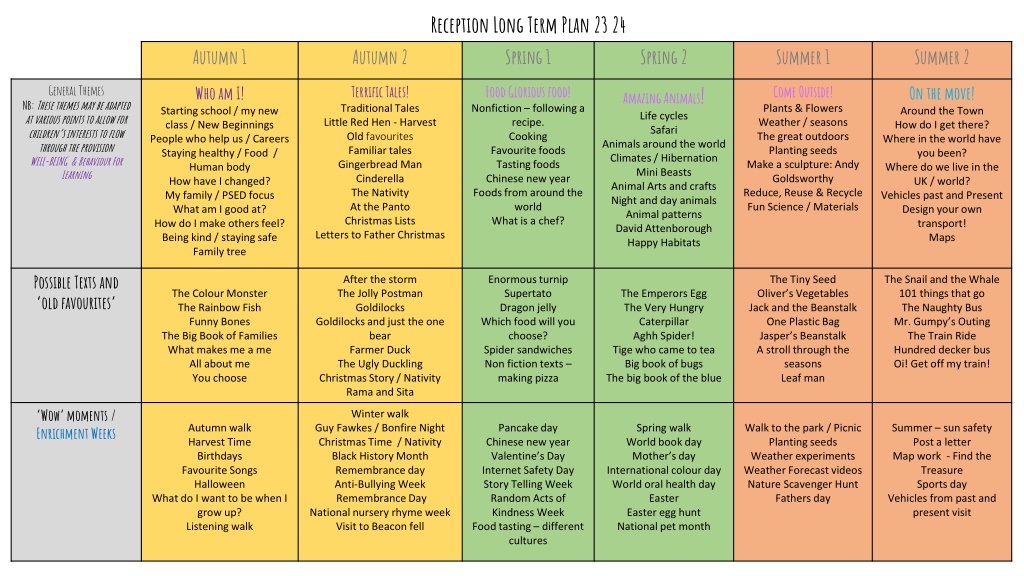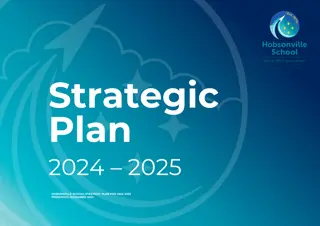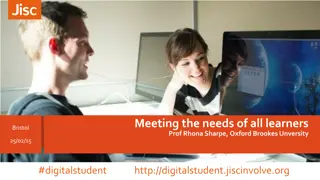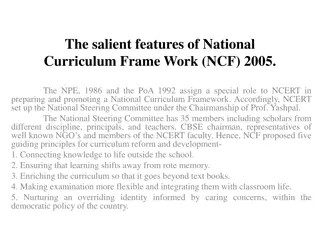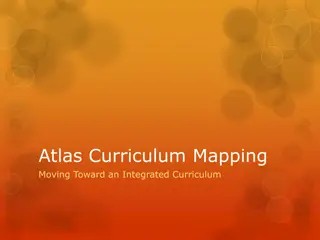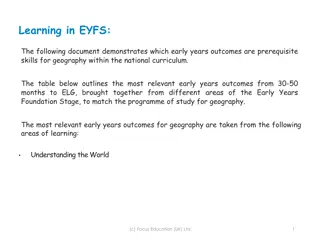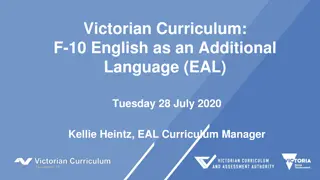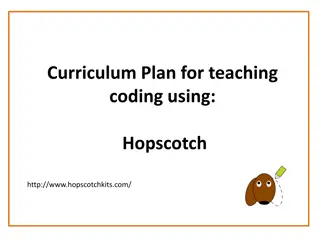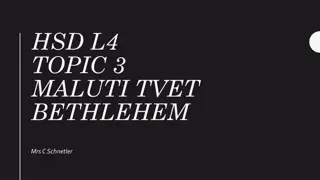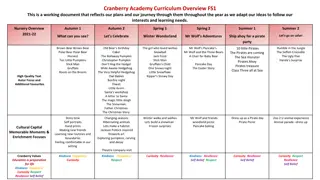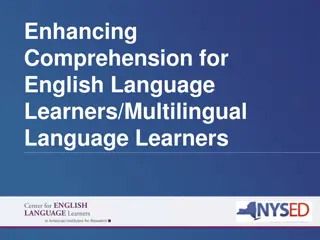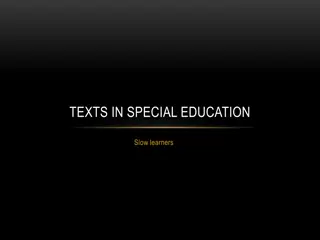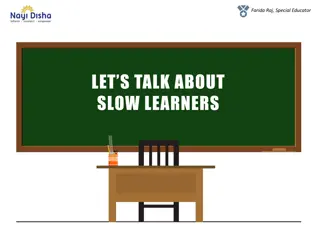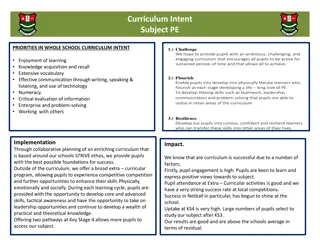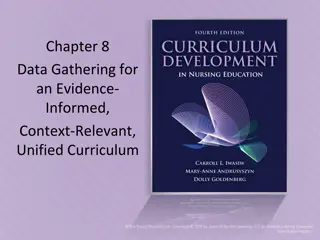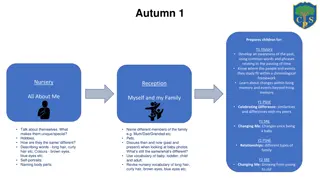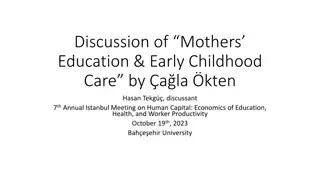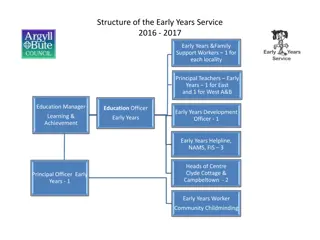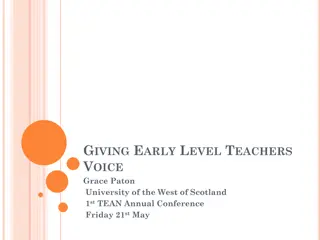Enriching Early Education Curriculum for Young Learners
The comprehensive long-term plan for Reception classes includes engaging themes like Amazing Animals, Terrific Tales, Food Glorious Food, and more to stimulate children's learning and development. Through a language-rich environment, interactive activities, and exciting events, this curriculum aims to enhance communication, language skills, and holistic growth.
Download Presentation

Please find below an Image/Link to download the presentation.
The content on the website is provided AS IS for your information and personal use only. It may not be sold, licensed, or shared on other websites without obtaining consent from the author. Download presentation by click this link. If you encounter any issues during the download, it is possible that the publisher has removed the file from their server.
E N D
Presentation Transcript
Reception Long Term Plan 23 24 Spring 1 Autumn 1 Autumn 2 Spring 2 Summer 1 Summer 2 Amazing Animals! Life cycles Safari Animals around the world Climates / Hibernation Mini Beasts Animal Arts and crafts Night and day animals Animal patterns David Attenborough Happy Habitats Who am I! On the move! Around the Town How do I get there? Where in the world have you been? Where do we live in the UK / world? Vehicles past and Present Design your own transport! Maps Terrific Tales! Traditional Tales Little Red Hen - Harvest Old favourites Familiar tales Gingerbread Man Cinderella The Nativity At the Panto Christmas Lists Letters to Father Christmas Food Glorious food! Nonfiction following a recipe. Cooking Favourite foods Tasting foods Chinese new year Foods from around the world What is a chef? Come Outside! Plants & Flowers Weather / seasons The great outdoors Planting seeds Make a sculpture: Andy Goldsworthy Reduce, Reuse & Recycle Fun Science / Materials General Themes NB: These themes may be adapted at various points to allow for children s interests to flow through the provision WELL-BEING & Behaviour For Learning Starting school / my new class / New Beginnings People who help us / Careers Staying healthy / Food / Human body How have I changed? My family / PSED focus What am I good at? How do I make others feel? Being kind / staying safe Family tree Possible Texts and old favourites After the storm The Jolly Postman Goldilocks Goldilocks and just the one bear Farmer Duck The Ugly Duckling Christmas Story / Nativity Rama and Sita Enormous turnip Supertato Dragon jelly Which food will you choose? Spider sandwiches Non fiction texts making pizza The Tiny Seed Oliver s Vegetables Jack and the Beanstalk One Plastic Bag Jasper s Beanstalk A stroll through the seasons Leaf man The Snail and the Whale 101 things that go The Naughty Bus Mr. Gumpy s Outing The Train Ride Hundred decker bus Oi! Get off my train! The Colour Monster The Rainbow Fish Funny Bones The Big Book of Families What makes me a me All about me You choose The Emperors Egg The Very Hungry Caterpillar Aghh Spider! Tige who came to tea Big book of bugs The big book of the blue Wow moments / Enrichment Weeks Winter walk Autumn walk Harvest Time Birthdays Favourite Songs Halloween What do I want to be when I grow up? Listening walk Guy Fawkes / Bonfire Night Christmas Time / Nativity Black History Month Remembrance day Anti-Bullying Week Remembrance Day National nursery rhyme week Visit to Beacon fell Pancake day Chinese new year Valentine s Day Internet Safety Day Story Telling Week Random Acts of Kindness Week Food tasting different cultures Spring walk World book day Mother s day International colour day World oral health day Easter Easter egg hunt National pet month Walk to the park / Picnic Planting seeds Weather experiments Weather Forecast videos Nature Scavenger Hunt Fathers day Summer sun safety Post a letter Map work - Find the Treasure Sports day Vehicles from past and present visit
Autumn 1 Who am I! Autumn 2 Terrific Tales! Spring 1 Food Glorious food! Spring 2 Amazing Animals! Summer 1 Come Outside! Summer 2 On the move! General Themes Communication and Language The development of children s spoken language underpins all seven areas of learning and development. Children s back-and-forth interactions from an early age form the foundations for language and cognitive development. The number and quality of the conversations they have with adults and peers throughout the day in a language-rich environment is crucial. By commenting on what children are interested in or doing,and echoing back what they say with new vocabulary added, practitioners will build children's language effectively. Reading frequently to children, and engaging them actively in stories, non-fiction, rhymes and poems, and then providing them with extensive opportunities to use and embed new words in a range of contexts, will give children the opportunity to thrive. Through conversation, story-telling and role play, where children share their ideas with support and modelling from their teacher, and sensitive questioning that invites them to elaborate, children become comfortable using a rich range of vocabulary and language structures. Whole EYFS Focus C&L is developed throughout the year through high quality interactions, daily group discussions, sharing circles, PSHE times, stories, singing, speech and language interventions, EYFS productions, assemblies. Welcome to EYFS Settling in activities Making friends Children talking about experiences that are familiar to them What are your passions / goals / dreams? This is me! Rhyming and alliteration Familiar Print Sharing facts about me! All about me! Model talk routines through the day. For example, arriving in school: Good morning, how are you? Tell me a story! Develop vocabulary Discovering Passions Tell me a story - retelling stories Story language Word hunts Listening and responding to stories Following instructions Takes part in discussion Understand how to listen carefully and why listening is important. Use new vocabulary through the day. Choose books that will develop their vocabulary. Tell me why! Using language well Ask s how and why questions Discovering Passions Retell a story with story language Story invention talk it! Ask questions to find out more and to check they understand what has been said to them. Describe events in some detail. Listen to and talk about stories to build familiarity and understanding. Learn rhymes, poems and songs. Talk it through! Describe events in detail time connectives Discovering Passions Understand how to listen carefully and why listening is important. Use picture cue cards to talk about an object: Stories from other cultures and traditions Learn rhymes, poems and songs. What happened? Discovering Passions Re-read some books so children learn the language necessary to talk about what is happening in each illustration and relate it to their own lives What colour is it? Where would you find it? Sustained focus when listening to a story Time to share! Discovering Passions Read aloud books to children that will extend their knowledge of the world and illustrate a current topic. Select books containing photographs and pictures, for example, places in different weather conditions and seasons. Daily story time
Autumn 1 Who am I! Autumn 2 Terrific Tales! Spring 1 Food Glorious food! Spring 2 Amazing Animals! Summer 1 Come Outside! Summer 2 On the move! Themes Personal, Social and Emotional Development Children s personal, social and emotional development (PSED) is crucial for children to lead healthy and happy lives and is fundamental to their cognitive development. Underpinning their personal development are the important attachments that shape their social world. Strong, warm and supportive relationships with adults enable children to learn how to understand their own feelings and those of others. Children should be supported to manage emotions, develop a positive sense of self, set themselves simple goals, have confidence in their own abilities, to persist and wait for what they want and direct attention, as necessary. Through adult modelling and guidance, they will learn how to look after their bodies, including healthy eating, and manage personal needs independently. Through supported interaction with other children, they learn how to make good friendships, co-operate and resolve conflicts peaceably. These attributes will provide a secure platform from which children can achieve at school and in later life. Managing Self New Beginnings See themselves as a valuable individual. Class Rule Rules and Routines Supporting children to build relationships Dreams and Goals Getting on and falling out. How to deal with anger Emotions Self - Confidence Build constructive and respectful relationships. Ask children to explain to others how they thought about a problem or an emotion and how they dealt with it. Good to be me Feelings Learning about qualities and differences Celebrating differences Identify and moderate their own feelings socially and emotionally. Encourage them to think about their own feelings and those of others by giving explicit examples of how others might feel in particular scenarios Relationships Looking after others Friendships Dreams and Goals Show resilience and perseverance in the face of challenge. Discuss why we take turns, wait politely, tidy up after ourselves and so on. Taking part in sports day - Winning and loosing Changing me Look how far I've come! Model positive behaviour and highlight exemplary behaviour of children in class, narrating what was kind and considerate about the behaviour. What makes a good friend? Healthy me Random acts of Kindness Looking after pets Looking After our Planet Give children strategies for staying calm in the face of frustration. Talk them through why we take turns, wait politely, tidy up after ourselves and so on Self - Regulation Link to Behaviour for Learning Show an understanding of their own feelings and those of others, and begin to regulate their behaviour accordingly. Set and work towards simple goals, being able to wait for what they want and control their immediate impulses when appropriate. Give focused attention to what the teacher says, responding appropriately even when engaged in activity, and show an ability to follow instructions involving several ideas or actions. Controlling own feelings and behaviours Applying personalised strategies to return to a state of calm Being able to curb impulsive behaviours Being able to concentrate on a task Being able to ignore distractions Planning Thinking before acting Persisting in the face of difficulty. Self-regulatory skills can be defined as the ability of children to manage their own behaviour and aspects of their learning. In the early years, efforts to develop self- regulation often seek to improve levels of self-control and reduce impulsivity. Activities typically include supporting children in articulating their plans and learning strategies and reviewing what they have done. Education Endowment Foundation.
Autumn 1 Autumn 2 Spring 1 Spring 2 Summer 1 Summer 2 Themes Who am I! Terrific Tales Food Glorious food Amazing animals Come outside On the move Physical development Physical activity is vitalin children s all-round development, enabling them to pursue happy, healthy and active lives. Gross and fine motor experiences develop incrementally throughout early childhood, starting with sensory explorations and the development of a child s strength, co-ordination and positional awareness through tummy time, crawling and play movement with both objects and adults. By creating games and providing opportunities for play both indoors and outdoors, adults can support children to develop their core strength, stability, balance, spatial awareness, co-ordination and agility. Gross motor skills provide the foundation for developing healthy bodies and social and emotional well-being. Fine motor control and precision helps with hand-eye co-ordination, which is later linked to early literacy. Repeated and varied opportunities to explore and play with small world activities, puzzles, arts and crafts and the practice of using small tools, with feedback and support from adults, allow children to develop proficiency, control and confidence. Fine motor Continuously check the process of children s handwriting (pencil grip and letter formation, including directionality). Provide extra help and guidance when needed. Threading, cutting, weaving, playdough, Fine Motor activities. Manipulate objects with good fine motor skills Draw lines and circles using gross motor movements Hold pencil/paint brush beyond whole hand grasp Pencil Grip Threading, cutting, weaving, playdough, Fine Motor activities. Develop muscle tone to put pencil pressure on paper Use tools to effect changes to materials Show preference for dominant hand Engage children in structured activities: guide them in what to draw, write or copy. Teach and model correct letter formation. Threading, cutting, weaving, playdough, Fine Motor activities. Begin to form letters correctly Handle tools, objects, construction and malleable materials with increasing control Encourage children to draw freely. Holding Small Items / Button Clothing / Cutting with Scissors Threading, cutting, weaving, playdough, Fine Motor activities. Hold pencil effectively with comfortable grip Forms recognisable letters most correctly formed Threading, cutting, weaving, playdough, Fine Motor activities. Develop pencil grip and letter formation continually Use one hand consistently for fine motor tasks Cut along a straight line with scissors / Start to cut along a curved line, like a circle / Draw a cross Threading, cutting, weaving, playdough, Fine Motor activities. Form letters correctly Copy a square Begin to draw diagonal lines, like in a triangle / Start to colour inside the lines of a picture Start to draw pictures that are recognisable / Build things with smaller linking blocks, such as Duplo or Lego Daily opportunities for Fine Motor Activities Gross motor Weekly Yoga Lesson Cooperation games i.e. parachute games. Climbing outdoor equipment Different ways of moving to be explored with children Changing for PE / Help individual children to develop good personal hygiene. Acknowledge and praise their efforts. Provide regular reminders about thorough handwashing and toileting. Ball skills- throwing and catching. Crates play- climbing. Skipping ropes in outside area dance related activities Provide a range of wheeled resources for children to balance, sit or ride on, or pull and push. Two-wheeled balance bikes and pedal bikes., wheelbarrows, prams and carts are all good options Ball skills- aiming, dribbling, pushing, throwing & catching, patting, or kicking Ensure that spaces are accessible to children with varying confidence levels, skills and needs. Provide a wide range of activities to support a broad range of abilities. Dance / moving to music Gymnastics ./ Balance Balance- children moving with confidence dance related activities Provide opportunities for children to, spin, rock, tilt, fall, slide and bounce. Use picture books and other resources to explain the importance of the different aspects of a healthy lifestyle. Obstacle activities children moving over, under, through and around equipment Encourage children to be highly active and get out of breath several times every day. Provide opportunities for children to, spin, rock, tilt, fall, slide and bounce. Dance / moving to music Races / team games involving gross motor movements dance related activities Allow less competent and confident children to spend time initially observing and listening, without feeling pressured to join in. From Development Matters Revise and refine the fundamental movement skills they have already acquired: - rolling - crawling - walking - jumping - running - hopping - skipping climbing Progress towards a more fluent style of moving, with developing control and grace. Develop the overall body strength, co-ordination, balance and agility needed to engage successfully with future physical education sessions and other physical disciplines including dance, gymnastics, sport and swimming. Develop their small motor skills so that they can use a range of tools competently, safely and confidently. Suggested tools: pencils for drawing and writing, paintbrushes, scissors, knives, forks and spoons. Use their core muscle strength to achieve a good posture when sitting at a table or sitting on the floor. Confidently and safely use a range of large and small apparatus indoors and outside, alone and in a group. Develop overall body-strength, balance, co-ordination and agility. Further develop and refine a range of ball skills including: throwing, catching, kicking, passing, batting, and aiming. Develop confidence, competence, precision and accuracy when engaging in activities that involve a ball.
Autumn 1 Autumn 2 Spring 1 Spring 2 Summer 1 Summer 2 General Themes Who am I! Terrific Tales! Food Glorious Food! Amazing Animals! Come Outside! On the move! Literacy It is crucial for children to develop a life-long love of reading. Reading consists of two dimensions: language comprehension and word reading. Language comprehension (necessary for both reading and writing) starts from birth. It only develops when adults talk with children about the world around them and the books (stories and non-fiction) they read with them, and enjoy rhymes, poems and songs together. Skilled word reading, taught later, involves both the speedy working out of the pronunciation of unfamiliar printed words (decoding) and the speedy recognition of familiar printed words. Writing involves transcription (spelling and handwriting) and composition (articulating ideas and structuring them in speech, before writing) Comprehension Retell stories related to events through acting/role play. Christmas letters/lists. Retelling stories using images and story Maps. Retelling of stories. Editing of story maps and orally retelling new stories. Non- Fiction Focus Retelling of stories. Sequence story use vocabulary of beginning, middle and end. Blend sounds into words, so that they can read short words made up of known letter sound correspondences. Enjoys an increasing range of books Stories from other cultures and tradition Making up stories with themselves as the main character Using Tales Toolkit strategy. Encourage children to record stories through picture drawing/mark making. Re-read books to build up their confidence in word reading, their fluency and their understanding and enjoyment. World Book Day Information leaflets about animals in the garden/plants and growing. Can draw pictures of characters/ event / setting in a story Joining in with rhymes and showing an interest in stories with repeated refrains. Environment print. Having a favourite story/rhyme. Understand the five key concepts about print: - print has meaning - print can have different purposes - we read English text from left to right and from top to bottom - the names of the different parts of a book Sequencing familiar stories through the use of pictures to tell the story. Recognising initial sounds. Name writing activities. Engage in extended conversations about stories, learning new vocabulary. - Developing a passion for reading Children will visit the library weekly Listen to stories, accurately anticipating key events & respond to what they hear with relevant comments, questions and reactions. Retell a story with actions and / or picture prompts as part of a group - Use story language when acting out a narrative. Rhyming words. Timeline of how plants grow. Word Reading Read simple phrases and sentences made up of words with known letter sound correspondences and, where necessary, a few exception words. Read a few common exception words matched to RWI. Make the books available for children to share at school and at home. Uses vocabulary and forms of speech that are increasingly influenced by their experiences of books. Make predictions Children will be working in different groups for Read Write Inc. SH Focus on consolidation of set 1 sounds and Set 2 Sounds, Green words . Ditty sheets, introduction of Red Ditty Books and Purple books for more confident readers. Can explain the main events of a story - Can draw pictures of characters/ event / setting in a story. May include labels, sentences or captions. Understand that a non-fiction is a non-story- it gives information instead. Fiction means story. - Can point to front cover, back cover, spine, blurb, illustration, illustrator, author and title. They develop their own narratives and explanations by connecting ideas or event Stories from other cultures and traditions Sort books into categories. Phonic Sounds: Phase 2 Reading: Blending CVC sounds, rhyming, alliteration, knows that print is read from left to right. Spotting diagraphs in words. Phonic Sounds Phase 3 Reading: Rhyming strings, common theme in traditional tales, identifying characters and settings. Phonic Sounds:Phase 3 Reading: Story structure-beginning, middle, end. Innovating and retelling stories to an audience, non-fiction books. Phonic Phase 4 Phonic Sounds: Phase 4 Phonic Sounds: Phase 2 Reading: Initial sounds, oral blending, CVC sounds, reciting know stories, listening to stories with attention and recall. Help children to read the sounds speedily. This will make sound- blending easier Listen to children read aloud, ensuring books are consistent with their developing phonic knowledge Reading: Non-fiction texts, Internal blending, Naming letters of the alphabet. Distinguishing capital letters and lower case letters. Reading: Reading simple sentences with fluency. Reading CVCC and CCVC words confidently. Help children to become familiar with letter groups, such as th , sh , ch , ee or igh . Provide opportunities for children to read words containing familiar letter groups: that , shop , chin , feet , storm , night . Show children how to touch each finger as they say each sound. For exception words such as the and said , help children identify the sound that is tricky to spell. Listen to children read some longer words made up of letter-sound correspondences they know: rabbit , himself , jumping . Note correspondences between letters and sounds that are unusual or that they have not yet been taught, such as do , said , were . End of term assessments Transition work with Year 1 Children should not be required to use other strategies to work out words.
Autumn 1 Autumn 2 Spring 1 Spring 2 Summer 1 Summer 2 General Themes Writing Who am I! Terrific Tales! Food Glorious Food! Amazing Animals! Come outside! On the move! Texts as a Stimulus: Goldilocks/ Goldilocks and just the one bear. Texts as a Stimulus: Texts as a Stimulus: Texts as a Stimulus: Texts as a Stimulus: Mr Gumpy s Outing (Cumulative) The train ride Texts as a Stimulus: Nursery Rhymes Tiger who came to tea CVC words / simple sentence writing using high frequency words Jack and the Bean stalk retell parts of the story / repeated refrains / speech bubbles Supertato Compare both stories' differences and similarities The rainbow fish - feelings Text used as stimulus across the year Character descriptions. Non-fiction texts 101 things that go Story map using key information. Giraffes can t dance Funny bones Healthy Food My Menu / Jaspers beanstalk Jack and the beanstalk Texts may due to children s interests Report about the animals falling into the water Retell the story in own words / reverse the journey Animal Fact File Compare two animals Kitchen disco All about me text bodies The three little pigs A big book of bugs nonfiction Handa s surprise Non fiction texts Celebrations around the world/ A year full of celebrations and festivals Non fiction texts - Big book of the blue Non fiction texts making pizza Where do I live? What the ladybird heard Non fiction texts - You choose Creating own story maps, writing captions and labels, writing simple sentences. Writing short sentences to accompany story maps. Write a postcard / diary writing. Writing recipes, lists. Writing for a purpose in role play using phonetically plausible attempts at words, beginning to use finger spaces. Form lower-case and capital letters correctly. Writing some of the tricky words such as I, me, my, like, to, the. Writing CVC words, Labels using CVC, CVCC, CCVC words. Name writing, labelling using initial sounds, story scribing. Retelling stories in writing area, instructions for porridge. Dominant hand, tripod grip, mark making, giving meaning to marks and labelling. Shopping lists, Writing initial sounds and simple captions. Use initial sounds to label characters / images. Silly soup. Names Labels. Captions Lists Diagrams Story writing, writing sentences using a range of tricky words that are spelt correctly. Beginning to use full stops, capital letters and finger spaces. Innovation of familiar texts Using familiar texts as a model for writing own stories. Guided writing based around developing short sentences in a meaningful context. Order the Easter story. Help children identify the sound that is tricky to spell. Character descriptions. Write 2 sentences Rhyming words. Sequence the story/Write a sentence Create a story board.
Autumn 1 Autumn 2 Spring 1 Spring 2 Summer 1 Summer 2 Themes Maths Who am I! Terrific Tales Food animals Outside Transport Developing a strong grounding in number is essential so that all children develop the necessary building blocks to excel mathematically. Children should be able to count confidently, develop a deep understanding of the numbers to 10, the relationships between them and the patterns within those numbers. By providing frequent and varied opportunities to build and apply this understanding - such as using manipulatives, including small pebbles and tens frames for organising counting - children will develop a secure base of knowledge and vocabulary from which mastery of mathematics is built. In addition, it is important that the curriculum includes rich opportunities for children to develop their spatial reasoning skills across all areas of mathematics including shape, space and measures. It is important that children develop positive attitudes and interests in mathematics, look for patterns and relationships, spot connections, have a go , talk to adults and peers about what they notice and not be afraid to make mistakes. Mastering number NCETM Numbers within 6 Count up to six objects. One more or one fewer Order numbers 1 6 Conservation of numbers within six Addition and subtraction within 6 Explore zero Explore addition and subtraction Shape and sorting Describe, and sort 2-D & 3-D shapes Describe position accurately Pattern and early number Recognise, describe, copy and extend colour and size patterns Count and represent the numbers 1 to 3 Estimate and check by counting. Recognise numbers in the environment. Numbers within 10 Count up to ten objects Represent, order and explore numbers to ten One more or fewer, one greater or less Addition and subtraction within 10 Explore addition as counting on and subtraction as taking away Numbers within 15 Count up to 15 objects and recognise different representations Order and explore numbers to 15 One more or fewer Grouping and sharing Counting and sharing in equal groups Grouping into fives and tens Relationship between grouping and sharing Numbers within 20 Count up to 10 objects Represent, order and explore numbers to 15 One more or fewer Doubling and halving Doubling and halving & the relationship between them Shape and pattern Describe and sort 2-D and 3-D shapes Recognise, complete and create patterns Addition and subtraction within 20 Commutativity Explore addition and subtraction Compare two amounts Relationship between doubling and halving Money Coin recognition and values Combinations to total 20p Change from 10p Measures Describe capacities Compare volumes Compare weights Estimate, compare and order lengths Depth of numbers within 20 Explore numbers and strategies Recognise and extend patterns Apply number, shape and measures knowledge Count forwards and backwards Numbers beyond 20 One more one less Estimate and count Grouping and sharing Early Mathematical Experiences Counting rhymes and songs Classifying objects based on one attribute Matching equal and unequal sets Comparing objects and sets. Subatising. Ordering objects and sets / introduce manipulatives. Number recognition. 2D Shapes. . Calendar and time Days of the week, seasons Sequence daily events Measures Estimate, order compare, discuss and explore capacity, weight and lengths
Autumn 1 Autumn 2 Spring 1 Spring 2 Summer 1 Summer 2 Themes Who am I! Terrific Tales! Food! Amazing Animals! Come outside! On the Move! Understanding the world . Understanding the world involves guiding children to make sense of their physical world and their community. The frequency and range of children s personal experiences increases their knowledge and sense of the world around them from visiting parks, libraries and museums to meeting important members of society such as police officers, nurses and firefighters. In addition, listening to a broad selection of stories, non-fiction, rhymes and poems will foster their understanding of our culturally, socially, technologically and ecologically diverse world. As well as building important knowledge, this extends their familiarity with words that support understanding across domains. Enriching and widening children s vocabulary will support later reading comprehension. o o o o Identifying their family. Commenting on photos of their family; naming who they can see and of what relation they are to them. Can talk about what they have done with their families during Christmas in the past. Design your favourite meal. Listening to stories and placing events in chronological order. . o Discuss how they got to school and what mode of transport they used. Introduce the children to a range of transport and where they can be found. Look at the difference between transport in this country and one other country. Encourage the children to make simple comparisons. Use bee-bots on simple maps. Encourage the children to use navigational language. Can children talk about their homes and what there is to do near their homes? Look out for children drawing/painting or constructing their homes. Environments Features of local environment Maps of local area Comparing places on Google Earth how are they similar/different? Introduce children to significant figures who have been to space and begin to understand that these events happened before they were born. Change in living things Changes in the leaves, weather, seasons, Explore the world around us and see how it changes as we enter Summer. Provide opportunities for children to note and record the weather. Building a Bug Hotel Draw children s attention to the immediate environment, introducing and modelling new vocabulary where appropriate. Discuss how they got to school and what mode of transport they used. Introduce the children to a range of transport and where they can be found. Look at the difference between transport in this country and one other country. Encourage the children to make simple comparisons. Use bee-bots on simple maps. Encourage the children to use navigational language. Environments Features of local environment Maps of local area Comparing places on Google Earth how are they similar/different? o What is your favourite food, talk about different types of food. o What can we do here to take care of animals in the jungle? o Visit to Beacon fell. o Can talk about what they do with their family and places they have been with their family. Can draw similarities and make comparisons between other families. Name and describe people who are familiar to them. o o o Show photos of how Christmas used to be celebrated in the past. Use world maps to show children where some stories are based. Use the Jolly Postman to draw information from a map and begin to understand why maps are so important to postmen. Carry out food experiments including skittles and bouncy eggs. Compare animals from a jungle to those on a farm. o o Explore a range of jungle animals. Learn their names and label their body parts. Nocturnal Animals Making sense of different environments and habitats o Chinese new year focus on food tasting and traditions. o Read fictional stories about families and start to tell the difference between real and fiction. Talk about members of their immediate family and community. o Pancake day learn about the tradition of pancake day. o o Use images, video clips, shared texts and other resources to bring the wider world into the classroom. Listen to what children say about what they see Listen to children describing and commenting on things they have seen whilst outside, including plants and animals. After close observation, draw pictures of the natural world, including animals and plants o Share different culture. o Food tasting a range of food. o o Navigating around our classroom and outdoor areas. Create treasure hunts to find places/ objects within our learning environment. o To introduce children to a range of fictional characters and creatures from stories and to begin to differentiate these characters from real people in their lives. o o Following a recipe to make a pizza. o Look at food from around the world what is similar and different. o Introduce children to different occupations and how they use transport to help them in their jobs. o o o o Stranger danger (based on Jack and the beanstalk). Talking about occupations and how to identify strangers that can help them when they are in need. . o Listen out for and make note of children s discussion between themselves regarding their experience of past birthday celebrations. o o o Encourage them to comment on what their home is like. Show photos of the children s homes and encourage them to draw comparisons.
Autumn 1 Autumn 2 Spring 1 Spring 2 Summer 1 Summer 2 Themes Who am I! Terrific Tales! Food Glorious Food! Amazing Animals! Come Outside! On the Move! Expressive Arts and Design . The development of children s artistic and cultural awareness supports their imagination and creativity. It is important that children have regular opportunities to engage with the arts, enabling them to explore and play with a wide range of media and materials. The quality and variety of what children see, hear and participate in is crucial for developing their understanding, self-expression, vocabulary and ability to communicate through the arts. The frequency, repetition and depth of their experiences are fundamental to their progress in interpreting and appreciating what they hear, respond to and observe. Give children an insight into new musical worlds. Invite musicians in to play music to children and talk about it. Encourage children to listen attentively to music. Discuss changes and patterns as a piece of music develops. Join in with songs; beginning to mix colours, join in with role play games and use resources available for props; build models using construction equipment. Design and make rockets. Design and make objects they may need in space, thinking about form and function. Use different textures and materials to make houses for the three little pigs and bridges for the Three Billy Goats Children will be encouraged to select the tools and techniques they need to assemble materials that they are using e.g creating animal masks. Make different textures; make patterns using different colours Making lanterns, Chinese writing, puppet making, Chinese music and composition Explore planting . Pastel drawings, printing, patterns on Life cycles, Flowers-Sun flowers Listen to music and make their own dances in response. Junk modelling, houses, bridges boats and transport. Food printing Sing call-and-response songs, so that children can echo phrases of songs you sing. Find out where different animals live using a map. Collage using a range of materials. Artwork themed around Eric Carle / The Seasons Art Provide a wide range of props for play which encourage imagination. Firework pictures, Christmas decorations, Christmas cards, Christmas songs/poems Exploration of other countries dressing up in different costumes. Collage-farm animals Potato printing Recite poem linked to pancake day Self-portraits, junk modelling, take picture of children s creations and record them explaining what they did. Mother s Day crafts Provide children with a range of materials for children to construct The use of story maps, props, puppets & story bags will encourage children to retell, invent and adapt stories. Easter crafts Listen to a range of songs to perform. Sketching using different items. Symmetrical butterflies Sketching using different items. Exploring sounds and how they can be changed, tapping out of simple rhythms. Role Play Party s and Celebrations Role Play of The Nativity
Early Learning Goals end of the year Communication and Language Personal, social, emotional development Physical Development Literacy Maths Understanding the World Expressive arts and design ELG: Self-Regulation ELG: Past and Present ELG: Creating with Materials ELG: Gross Motor Skills ELG: Comprehension ELG: Number ELG: Listening, Attention and Understanding Show an understanding of their own feelings and those of others, and begin to regulate their behaviour accordingly. Talk about the lives of the people around them and their roles in society. Safely use and explore a variety of materials, tools and techniques, experimenting with colour, design, texture, form and function. Negotiate space and obstacles safely, with consideration for themselves and others. Demonstrate understanding of what has been read to them by retelling stories and narratives using their own words and recently introduced vocabulary. Have a deep understanding of number to 10, including the composition of each number; Listen attentively and respond to what they hear with relevant questions, comments and actions when being read to and during whole class discussions and small group interactions Know some similarities and differences between things in the past and now, drawing on their experiences and what has been read in class. Set and work towards simple goals, being able to wait for what they want and control their immediate impulses when appropriate. Anticipate where appropriate key events in stories. Subitise (recognise quantities without counting) up to 5; - Automatically recall (without reference to rhymes, counting or other aids) number bonds up to 5 (including subtraction facts) and some number bonds to 10, including double facts. Demonstrate strength, balance and coordination when playing. Share their creations, explaining the process they have used; - Make use of props and materials when role playing characters in narratives and stories. Understand the past through settings, characters and events encountered in books read in class and storytelling. Use and understand recently introduced vocabulary during discussions about stories, non-fiction, rhymes and poems and during role-play. Make comments about what they have heard and ask questions to clarify their understanding Give focused attention to what the teacher says, responding appropriately even when engaged in activity, and show an ability to follow instructions involving several ideas or actions. ELG: People, Culture and Communities Hold conversation when engaged in back-and-forth exchanges with their teacher and peers Move energetically, such as running, jumping, dancing, hopping, skipping and climbing. ELG: Word Reading ELG: Being Imaginative and Expressive Describe their immediate environment using knowledge from observation, discussion, stories, non- fiction texts and maps. Say a sound for each letter in the alphabet and at least 10 digraphs. ELG: Numerical Patterns ELG: Managing Self Invent, adapt and recount narratives and stories with peers and their teacher. ELG: Speaking Verbally count beyond 20, recognising the pattern of the counting system; - Compare quantities up to 10 in different contexts, recognising when one quantity is greater than, less than or the same as the other quantity. Read words consistent with their phonic knowledge by sound-blending. ELG: Fine Motor Skills Be confident to try new activities and show independence, resilience and perseverance in the face of challenge. Know some similarities and differences between different religious and cultural communities in this country, drawing on their experiences and what has been read in class. Participate in small group, class and one- to-one discussions, offering their own ideas, using recently introduced vocabulary. Hold a pencil effectively in preparation for fluent writing using the tripod grip in almost all cases. Sing a range of well-known nursery rhymes and songs; Perform songs, rhymes, poems and stories with others, and when appropriate try to move in time with music. Read aloud simple sentences and books that are consistent with their phonic knowledge, including some common exception words. Explain the reasons for rules, know right from wrong and try to behave accordingly. Explain some similarities and differences between life in this country and life in other countries, drawing on knowledge from stories, non-fiction texts and when appropriate maps. Offer explanations for why things might happen, making use of recently introduced vocabulary from stories, non- fiction, rhymes and poems when appropriate. ELG: Writing Use a range of small tools, including scissors, paint brushes and cutlery. Explore and represent patterns within numbers up to 10, including evens and odds, double facts and how quantities can be distributed equally. Manage their own basic hygiene and personal needs, including dressing, going to the toilet and understanding the importance of healthy food choices. Write recognisable letters, most of which are correctly formed. ELG: The Natural World Begin to show accuracy and care when drawing. Express their ideas and feelings about their experiences using full sentences, including use of past, present and future tenses and making use of conjunctions, with modelling and support from their teacher. Spell words by identifying sounds in them and representing the sounds with a letter or letters. Explore the natural world around them, making observations and drawing pictures of animals and plants. ELG: Building Relationships Write simple phrases and sentences that can be read by others. Work and play cooperatively and take turns with others. Know some similarities and differences between the natural world around them and contrasting environments, drawing on their experiences and what has been read in class. Form positive attachments to adults and friendships with peers;. Understand some important processes and changes in the natural world around them, including the seasons and changing states of matter. Show sensitivity to their own and to others needs.
